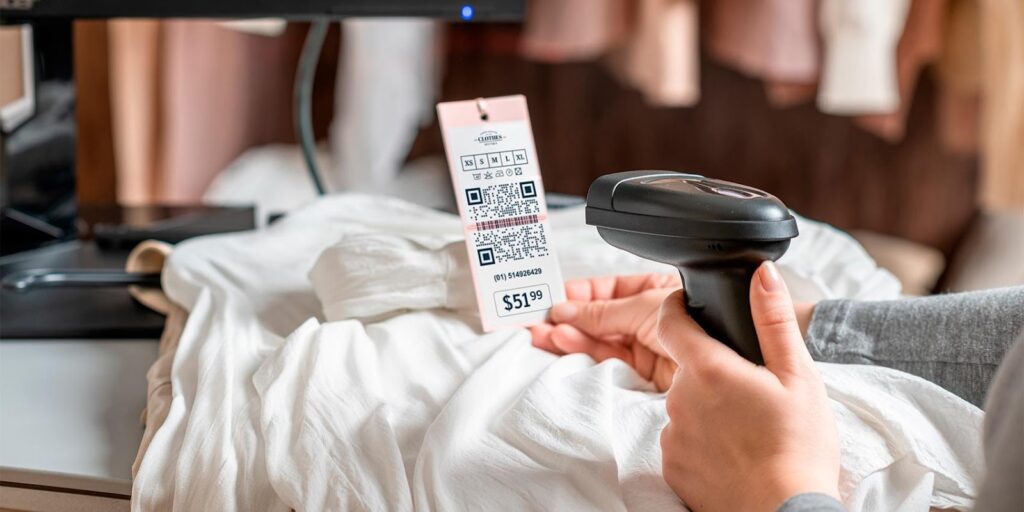Impactful inventory management is critical in retail. It ensures that staff organizes products and makes them available to customers.
However, traditional inventory management has many challenges. It can lead to out-of-stock and overstocking issues and slow manual processes.
This is where GS1 barcodes come in. They are changing how retailers manage inventory and offer a more accurate way to handle stock.
Find out how to revolutionize inventory management with GS1 barcodes for retail and give businesses like yours a competitive edge.
Who makes barcodes?
Since their introduction in the 1970s, barcodes have transformed grocery stores by speeding up checkout times and improving the accuracy of inventory tracking.
But where do these barcodes come from?
The Uniform Code Council (now part of the Global Standards 1 organization) produces the most widely used barcodes, such as the UPC (Universal Product Code).
Over two million companies rely on GS1’s new UPC, the industry standard for product identification. These barcodes provide a consistent, universal system for tracking goods and managing inventory.
Each GS1 code contains important product data such as brand, item type, and price. This allows retailers to monitor stock levels and keep products available when customers need them.
How do GS1 Digital Link barcodes improve inventory management in the retail industry?
Let’s discuss how possible it is to revolutionize inventory management with GS1 barcodes for retail and other related businesses:
Improved product identification and traceability
GS1’s 2D barcodes, like QR codes, make product identification easy and accurate. With a unique product identifier for each item, these barcodes reduce the chances of human error when tracking items.
Retailers can scan the code and use tools like the GS1 calculator to access detailed information about the product, such as its origin, manufacturer, and shelf life.
Streamlined stock management
Many retailers struggle to manage stock levels, and overstocking cuts profits. Meanwhile, running out of stock leads to lost sales and unhappy customers.
A dynamic GS1 Digital Link maker simplifies real-time inventory tracking. Retailers can see what’s in stock, what’s low, and when to reorder.
Organized supply chain integration
GS1 codes are useful not only at the points of sale but also the entire supply chain, from manufacturing to storage to distribution.
GS1 supply chain barcodes allow everyone in the supply chain to track goods using one standardized code, improving coordination and reducing errors.
Enhanced customer experience
Customers seek a smooth shopping experience, both in-store and online. GS1 QR codes help retailers keep the right products in stock, ensuring customers can see item availability before visiting or ordering online.
How brands revolutionize inventory management with GS1 barcodes for retail
Macy’s, the U.S. retail giant, is a great example of the impact of GS1 barcodes—Macy’s adopted barcodes to improve its inventory accuracy.
By implementing GS1-standardized barcodes, Macy’s improved its inventory accuracy by nearly 32%. This allowed the company to manage stock better and serve customers more successfully.
This move saved Macy’s time, reduced costs, and led to higher customer satisfaction.
GS1-powered barcodes, in general, provide the ground for integrating future technologies in retail. Such as:
- IoT and RFID integration: Combining GS1 with IoT and RFID enables precise, real-time inventory tracking.
- Enhanced item tracking: Retailers could monitor every item’s movement within stores, making it easy to locate misplaced stock.
- Data-driven retail operations: Integrating these technologies offers more intelligent operations, better insights, and less need for manual tracking.
The competitive edge of GS1 in modern retail
GS1 codes help retailers improve stock accuracy, streamline the supply chain, and boost customer satisfaction.
Knowing how to revolutionize inventory management with GS1 barcode for retail is a MUST for businesses in the industry.
As GS1 QR codes are set to replace linear barcodes by 2027, it’s smart to use them now to enhance inventory management systems and prepare for the promising future of retail with GS1-powered barcodes.





